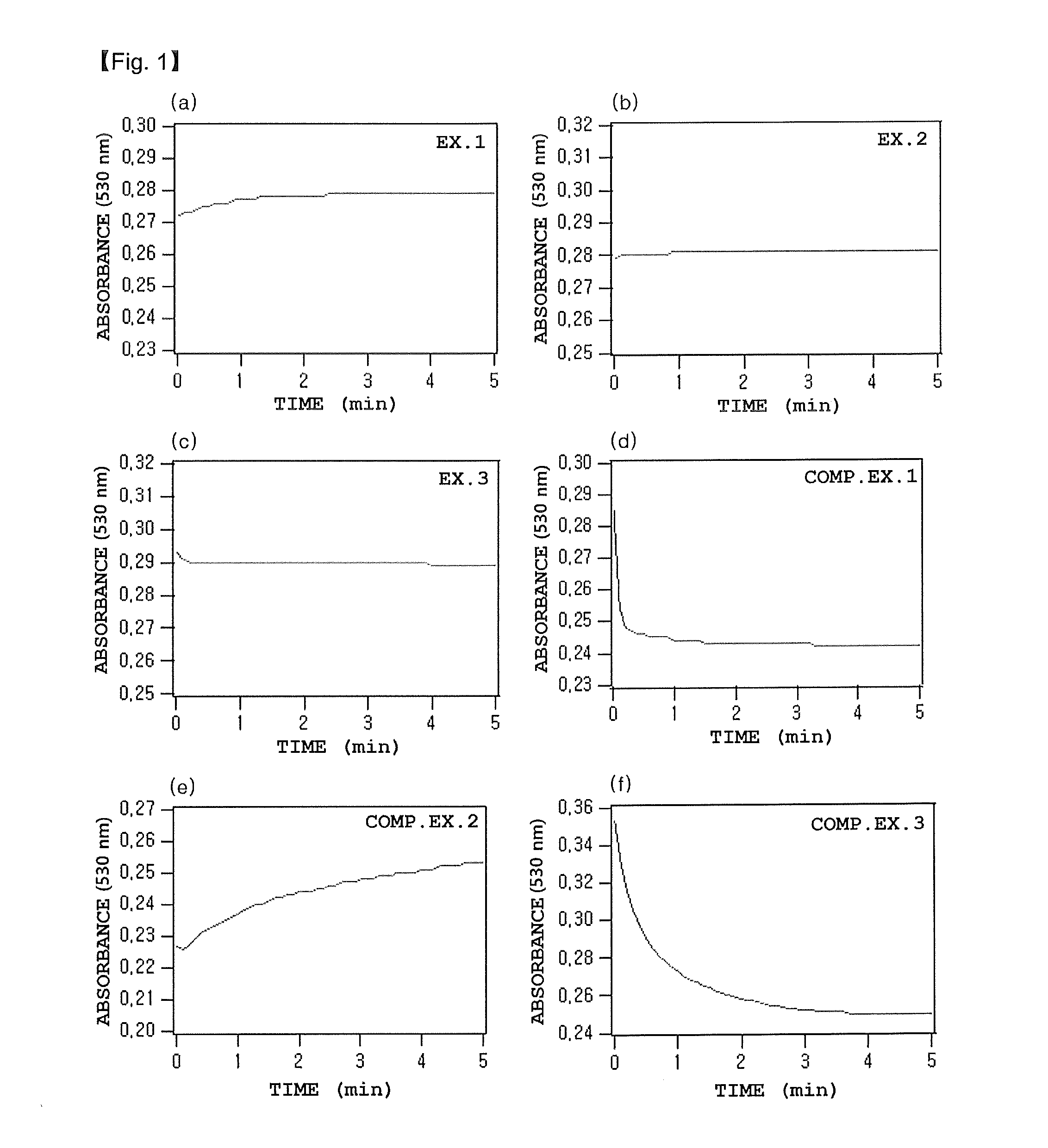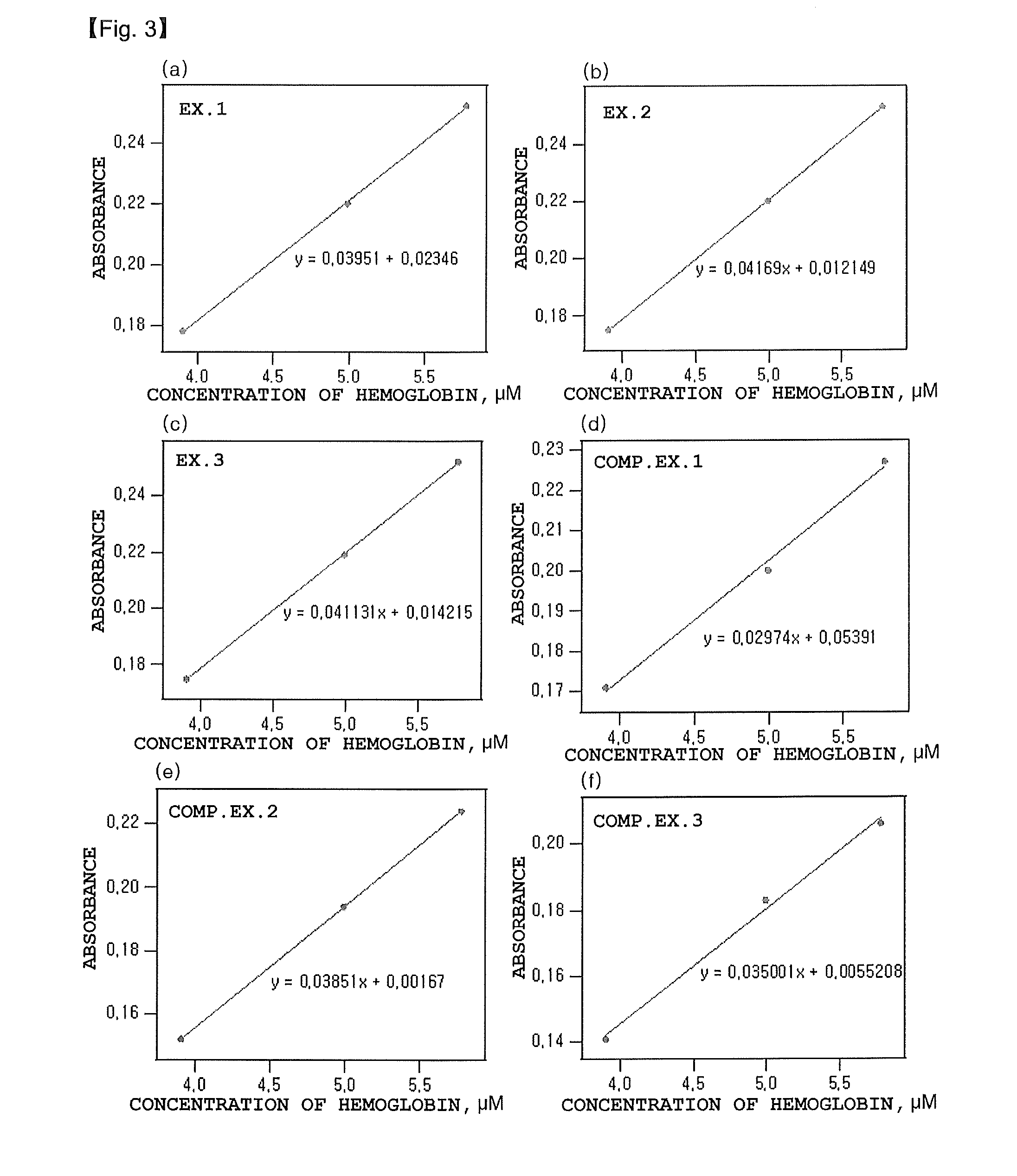Hemolysis reagent composition for hemoglobin a1c quantitative analysis using enzymatic method
a technology of enzymatic method and hemoglobin, which is applied in the field of hemolysis reagent composition for quantitative analysis of glycated hemoglobin, can solve the problems of inconvenient use, relatively high operation and maintenance cost, and very limited amount of supplies, so as to accelerate hemolysis rate and improve reaction sensitivity and reaction rate of hba1c
- Summary
- Abstract
- Description
- Claims
- Application Information
AI Technical Summary
Benefits of technology
Problems solved by technology
Method used
Image
Examples
preparation example 1
Preparation of an Enzymatic Reaction Composition Used after Pretreatment of Quantitative Analysis of HbAlc
[0096]A composition for enzymatic reaction used after pretreatment as a hemolysis of quantification of HbAlc was prepared by adding 800 U / mL of a microorganism-derived protease, 1 U / mL of fructosyl peptide oxidase (FPOX), 10 U / mL of peroxidase (POD), and 0.12 mM DA-67 (dye) as a substrate to a 100 mM MES buffer was added.
example 1
Preparation 1 of a Hemolysis Reagent Composition Used for Pretreatment of Quantitative Analysis of HbAlc
[0097]A hemolysis reagent composition 1 was prepared by adding 0.75 mg / mL of 3-(dimethyl(3-tetradecanamidopropyl)ammonio)propane-1-sulfonate as a surfactant and 2 mM NaNO2 as a nitrous compound to a 100 mM MES buffer.
example 2
Preparation 2 of a Hemolysis Reagent Composition Used for Pretreatment of Quantitative Analysis of HbAlc
[0098]A hemolysis reagent composition 2 was prepared in the same manner as in Example 1 except that 0.75 mg / mL of 4-(dimethyl(3-tetradecanamidopropyl)ammonio)butane-1-sulfonate was used instead of the surfactant used in Example 1.
PUM
| Property | Measurement | Unit |
|---|---|---|
| concentration | aaaaa | aaaaa |
| concentrations | aaaaa | aaaaa |
| concentrations | aaaaa | aaaaa |
Abstract
Description
Claims
Application Information
 Login to View More
Login to View More - R&D
- Intellectual Property
- Life Sciences
- Materials
- Tech Scout
- Unparalleled Data Quality
- Higher Quality Content
- 60% Fewer Hallucinations
Browse by: Latest US Patents, China's latest patents, Technical Efficacy Thesaurus, Application Domain, Technology Topic, Popular Technical Reports.
© 2025 PatSnap. All rights reserved.Legal|Privacy policy|Modern Slavery Act Transparency Statement|Sitemap|About US| Contact US: help@patsnap.com



